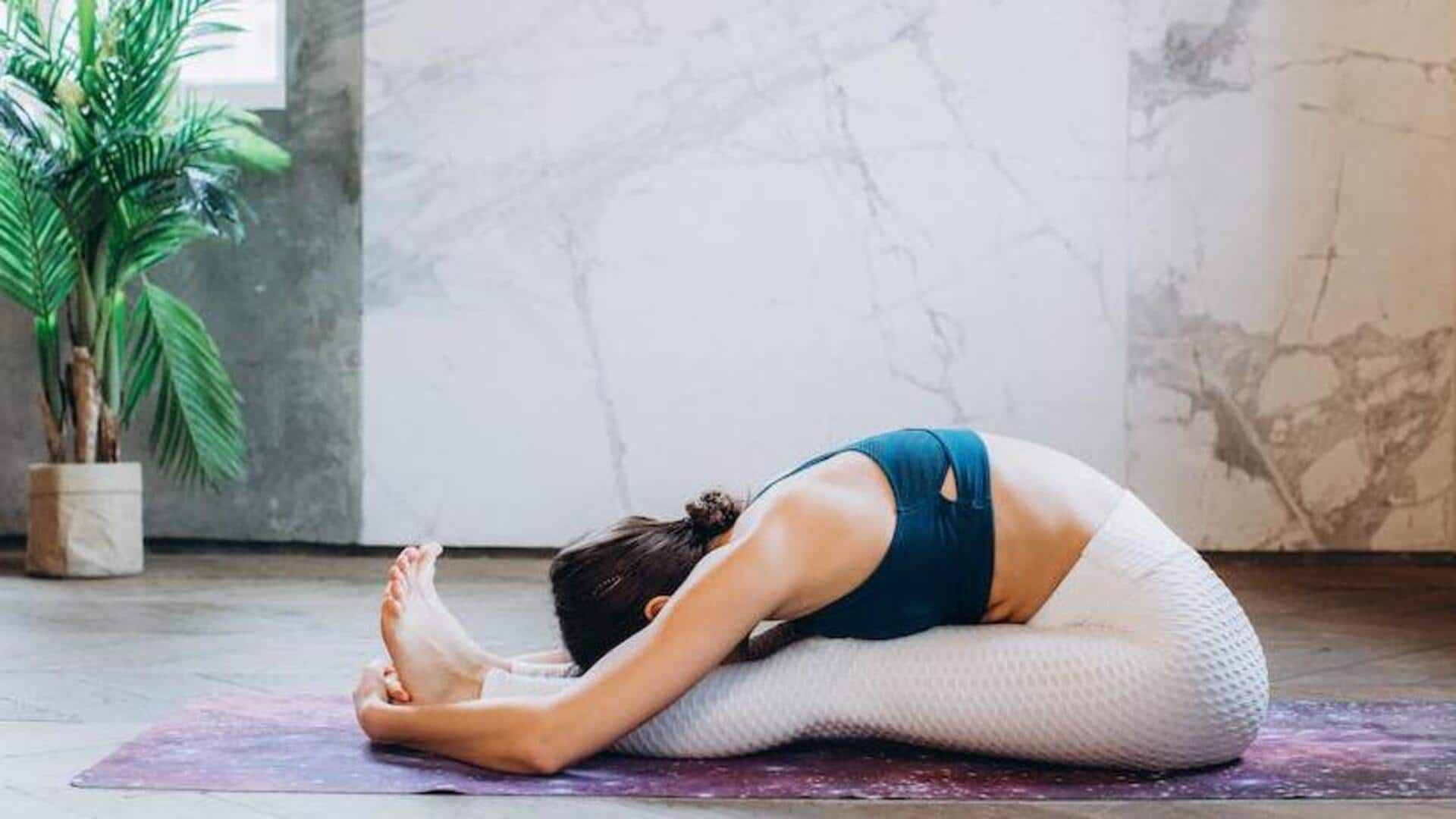
Paschimottanasana: Here's why you should practice it daily
What's the story
Paschimottanasana or the seated forward bend is a pose in Hatha yoga in which the entire body, right from your back to your heels, experiences a deep stretch. It is one asana that is used in modern workout forms, especially as a cool-down exercise after an intense fitness session. Today, let's discuss its history, step-by-step process, health benefits, and precautions before you practice.
History
History: This yoga pose has been described in 15th-century texts
The name, paschimottanasana, is a combination of three Sanskrit words paschima (meaning west), uttana (meaning extended or stretch), and asana (meaning pose or posture). It has been described in the first chapter (verses 28-29) of an ancient text titled Hatha Yoga Pradipika, which dates back to the 15th century, suggesting an incredibly ancient origin.
How to do
How to do: Take note of these steps
Begin by sitting on the floor and joining and stretching your legs straight outward. Exhale, bend forward, and try to touch/grab your toes with your hands. If you are unable to do that, you can instead hold your ankles. Now, keeping the back straight, try to rest your face on your knees and breathe normally. Do not bend your knees while attempting this pose.
Health benefits
Health benefits: It tones your limbs; improves mental health
Paschimottanasana helps you stretch your shoulders, back, and hamstrings, relieving any pain or tension present in these regions. It also calms down your nervous system, enhances sleep quality, and improves your mental health by improving blood circulation, relaxing your muscles, and massaging your energy centers. It is also a great pose to get rid of belly fat and burn calories to aid weight loss.
Precautions
Those with slipped discs, abdomen issues should refrain
If you have recently undergone abdominal surgery, check with your doctor before practicing paschimottanasana. People with slipped discs, stomach ulcers, abdomen pain, diarrhea, and back pain should also avoid doing this yoga pose as it may trigger various complications. It is not recommended for pregnant women because of the pressure it puts on the belly area.